Today I had the pleasure of interviewing Jim Worrall, an incredibly talented landscape photographer based in Melbourne, Australia. He is well known for his style of capturing the dynamics of water motion along with breathtaking scenery.
How did you first get into photography?
I took up photography in 2006 in response to a nagging creative urge. At that time I had a sense that something was missing from my life and I found that photography filled that void nicely.
In early 2007 I discovered the power and flexibility of exposure bracketing and stumbled upon the HDR tonemapping technique as it was becoming popular at the time. In late 2007 I bought my first DSLR camera and that was when I knew I was addicted.
What is your technique for capturing water motion?
Many of my waterscapes taken during daylight hours involve the use of heavy ND filtering. I nearly always use an ND400 filter and sometimes also attach an additional ND8 and/or circular polarizer in order to achieve the desired slow shutter speed.
Here’s where it gets a little geeky. Most of my waterscapes are long exposure HDR images generated from 3 exposures at 0,-2 and +2 EV. In order to achieve these 3 exposures I set my camera to aperture priority mode, enable auto bracketing and set the ISO as low as it will go. I then tinker with the aperture value, iso value and either add or remove ND filters in order to force the camera to achieve a shutter speed of 8 seconds for the first exposure (0 EV). Now when the shutter button is activated the camera gives me 3 exposures at 8 seconds, 2 seconds and 30 seconds (which corresponds to approximately 0,-2 and +2 EV)
When these 3 exposures are blended together in an HDR program the resulting image contains the misty silky effects from the 8 and 30 second exposures and also contains some details from the slower 2 second exposure. When shooting REALLY fast moving water I usually aim for a faster initial exposure time of say 4 seconds. The camera then gives me 3 bracketed exposures at 4 seconds, 1 second and 16 seconds (0,-2 and +2 EV)
The aim is to catch some detail in the fastest exposure but also benefit from the misty effect of the longer exposures. I invite readers to contact me if I haven’t explained the process clearly enough here.
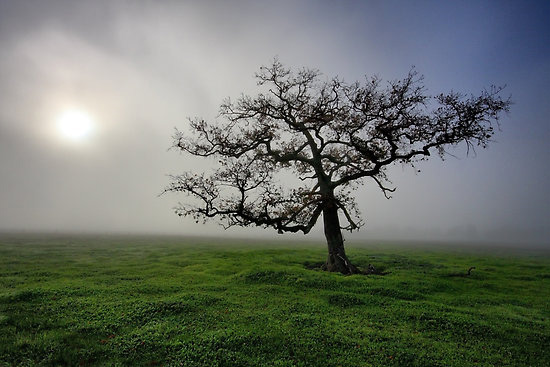
“Changes” A 3 exposure HDR image of a foggy farmland scene in Cranbourne, Australia. The HDR technique allowed me to shoot directly towards the bright sun through the fog and yet maintain details in the dark grass and tree trunk.
How would you describe your photographic style?
I’ve never really thought of myself as having a style, but when I look back over my portfolio I can see a gradual evolution of my images over time. I sometimes cringe when I review my earlier work, but then I take a deep breath and accept that these images are part of the learning process.
I guess I would describe my style as “trial and error”. :-)
Did you have any formal training in photography?
No, I’ve never had any formal training in photography. I started off learning the concepts of composition and exposure by reading books from the local library and researching the subject on the internet. I gained some practical experience by photographing my pet dogs using a point-and-shoot camera. They were always willing and certainly enjoyed the attention.
What is typically in your camera bag?
My main DSLR camera is a Canon 40D but I also carry a compact Panasonic Lumix LX3 for occasions when a DSLR is not convenient or appropriate. My lenses include the Canon 24-70mm f/2.8L, Sigma 10-20mm F4-5.6 EX DC, Canon 70-200 f/4L and Canon 50mm f/1.8. I carry and often use a Hoya ND400, a Hoya ND8 and Hoya circular polarizing filter.
I use a Manfrotto 190XDB tripod with an 804RC2 head. I have a Canon TC-80N3 remote timer/controller, great for exposures longer than 30 seconds and also interval timing. My external flash units are the Canon 580ex-11 and 430ex-11 units.
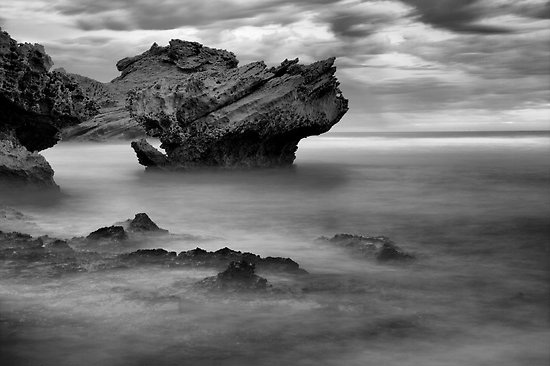
“Return to Primal” A long exposure HDR image taken after sunset. A blend of 3 exposures at shutter speeds of 8 seconds, 2 seconds and 30 seconds.
What are you looking forward to purchasing next?
Some Pocket Wizard remote flash triggers would be nice, ….one day.
Do you post-process your photos? If so, please describe your process and tools.
My post processing workflow for many of my HDR images is as follows: When using the auto-bracketing function on my Canon 40D I’m limited to 3 exposures so I generally set them to 0,-2,+2 EV which gives me the greatest dynamic range coverage. I always shoot using the RAW format when using the Canon 40D and import the RAW files into the Canon DPP (Digital Photo Professional) software package. Within DPP I do a lot of culling, removing images that I will definately not use. The remaining “keepers” have some sharpening applied within DPP and are then exported into a folder as 16 bit TIFFs.
When creating an HDR image I use a program called Dynamic Photo HDR. Many other people use a program called Photomatix which does a similar job. I usually import the 3 relevant 16 bit TIFFs into the program, align them and then tonemap them using the program’s “eye catching” setting as a starting point. I then experiment with the controls during the tone mapping stage to achieve the “look” that I’m trying to find.
When the tone mapped image is close to how I want it I save it as a 16 bit TIFF. I then open the 16 bit tonemapped TIFF in Photoshop and adjust the white and black levels, adjust colour saturation and maybe do a bit of dodging and burning. I then convert the image to an 8 bit jpeg before saving it and posting it online.
What has been your favorite photo location?
My favorite photo location is the ocean coastline along the Mornington Peninsula in Victoria, Australia. I find the whole atmosphere there very therapeutic and stimulating in a photographic sense.
What lies ahead for you? What is your next goal in photography?
My next photographic goal is to become more familiar and comfortable with using off-camera flash. I would like to achieve more natural looking portrait images under varying light conditions.
What tips or advice do you have for other aspiring photographers?
My main piece of advice to aspiring photographers would be to first learn the basics of how aperture, shutter speed and ISO work and how they interact with each other. Learn the basics of composition then practice, practice and more practice. When you make an image that looks ordinary ask yourself how you could shoot it again to improve it. Shoot low, lay on the ground, ..shoot high, climb that tree. Most of all have fun and experiment.
What is a common question you Receive from other photographers?
Many people write to me asking something like this – “You’re images are wonderful, what kind of camera do you use?”.
To be honest I think the camera brand is entirely irrelevant. The manufacturers of modern DSLR cameras do such a great job these days that there is very little technical difference between them. I think an interesting image comes more from the photographer’s mind than any of the tools he uses.
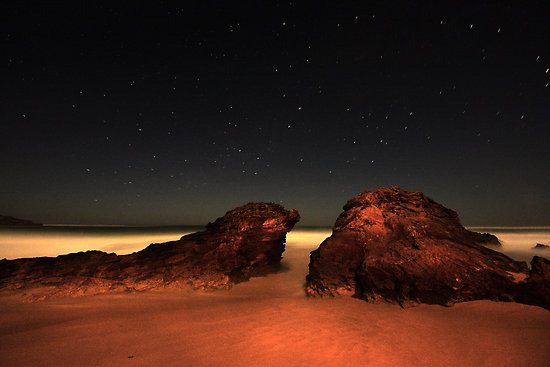
“Lions of the Night” A single long exposure taken after sunset on Blairgowrie beach. Lit by an almost full moon, and the rocks light-painted using an incandescent flashlight. Shutter Speed – 2 min, Aperture – F8, ISO – 400
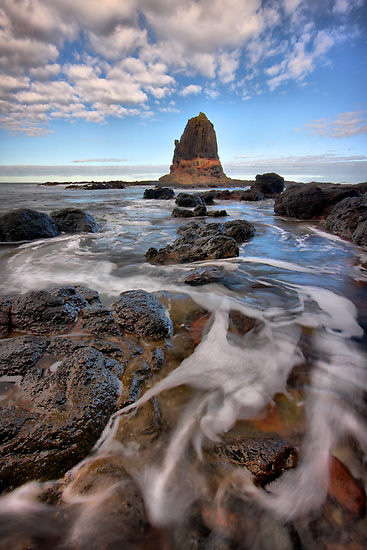
“Path to the Pulpit” An image from Cape Schanck in Victoria, Australia. A 3 exposure HDR using fast shutter speeds to capture details in the movement of the foreground water. The HDR process also allows capture of the brightest details in the sky and the darkest details in the dark rocks.
Thanks to Jim for talking with us!
Like This Article?
Don't Miss The Next One!
Join over 100,000 photographers of all experience levels who receive our free photography tips and articles to stay current:
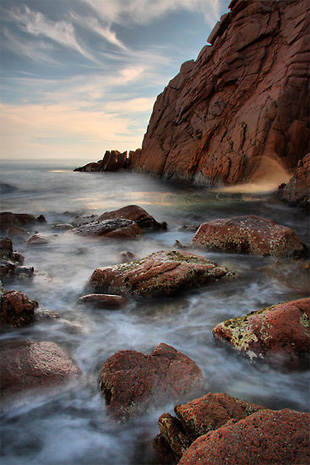





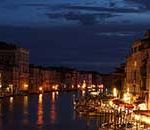
Great interview and interviewee! Really nice shots Jim!
Incredible article I really enjoyed reading it. Thanks Jim for sharing your tips and techniques. your work is really so Incredible. Great Interview dear Richard…
Cheers,
Balwant
Fantastic article I really enjoyed reading it and certain picked up a few pointers for my own seascape photography.
Jamie Paterson
Very nice.. Thanks Jim, once again for sharing your tips and techniques. Really like your work. and I’m not asking “Which camera do you use” :P probably because you’ve already mentioned it. :D
Well done.. keep doing great landscaping shots.
Have a nice day.
A great interview of an inspirational landscape photographer, Viewing Jim’s portfolio is a must to set a benchmark to aspire towards…Great work Jim and congratulations on the feature….Great interview also Richard..